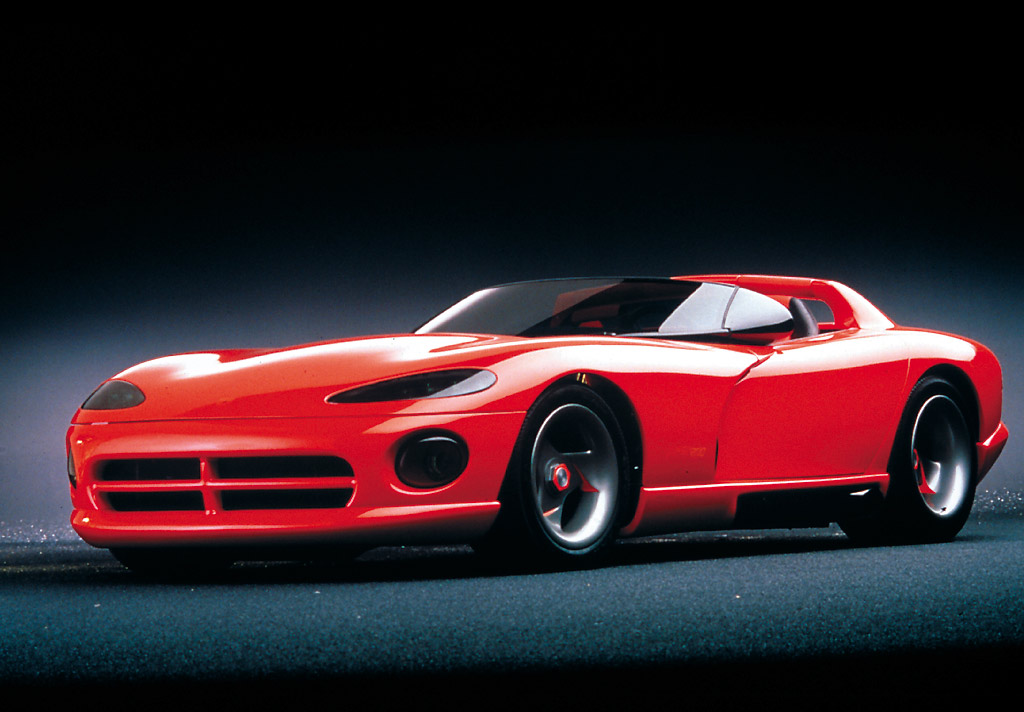17 years of the Dodge Viper
Oct. 22, 2006. 01:00 AM | THE STAR - -Most show cars are created just to give the designers something more entertaining to do than redraw door handles or window switches.But when the Dodge Viper debuted at the Detroit auto show in 1989, primarily as a fun-and-games exercise for then-Chrysler president Bob Lutz and chief designer Tom Gale, the public response was so immediate and so positive that Chrysler had to try and figure out some way to build it, and make a business case for it.Chrysler commissioned its then-subsidiary Lamborghini to cast some of its 8.0-litre V10 truck engines in aluminum for the Viper.
Initially, output was 400 horses, eventually increased to 450, and even more in competition versions.A tube frame and crude truck-based suspension bits were covered in some equally crude but voluptuous plastic body panels.
A flimsy canvas roof kept some of the elements at bay — until it flew off, which it did at about 280 km/h during one European road test.Carroll Shelby, who had done a similar project with the Cobra in the early 1960s, also had a hand in the initial design of the Viper (Cobra; Viper ... geddit?).
He drove a prototype as the pace car for the Indianapolis 500 in May of 1991, and production of the essentially hand-built cars began early the next year, initially at the old Mack Avenue Truck plant, then at a dedicated assembly facility on Connor St. in Detroit.
Chrysler used the Viper as a halo car for Dodge, as a test bed for new materials and as a team-building exercise.A mild refresh in 1996 saw increased power, improved brakes and suspension, and the introduction of the swoopy GTS Coupe. Various higher-performance models were introduced and Viper's competition career flourished.
The current model debuted in 2003. Initially, the motivation was simply to stretch the wheelbase enough to house a proper folding roof. That ride and handling would also benefit were considered bonuses.By the time the designers investigated all the implications, only an all-new design would do. And that's what you see today, without the huge (and prohibitively expensive to repair) clamshell hood and the roll hoop behind the seats.The side exhaust pipes? They're still under there, so don't get too close to the rocker panels.Jim Kenzie
Initially, output was 400 horses, eventually increased to 450, and even more in competition versions.A tube frame and crude truck-based suspension bits were covered in some equally crude but voluptuous plastic body panels.
A flimsy canvas roof kept some of the elements at bay — until it flew off, which it did at about 280 km/h during one European road test.Carroll Shelby, who had done a similar project with the Cobra in the early 1960s, also had a hand in the initial design of the Viper (Cobra; Viper ... geddit?).
He drove a prototype as the pace car for the Indianapolis 500 in May of 1991, and production of the essentially hand-built cars began early the next year, initially at the old Mack Avenue Truck plant, then at a dedicated assembly facility on Connor St. in Detroit.
Chrysler used the Viper as a halo car for Dodge, as a test bed for new materials and as a team-building exercise.A mild refresh in 1996 saw increased power, improved brakes and suspension, and the introduction of the swoopy GTS Coupe. Various higher-performance models were introduced and Viper's competition career flourished.
The current model debuted in 2003. Initially, the motivation was simply to stretch the wheelbase enough to house a proper folding roof. That ride and handling would also benefit were considered bonuses.By the time the designers investigated all the implications, only an all-new design would do. And that's what you see today, without the huge (and prohibitively expensive to repair) clamshell hood and the roll hoop behind the seats.The side exhaust pipes? They're still under there, so don't get too close to the rocker panels.Jim Kenzie

No comments:
Post a Comment